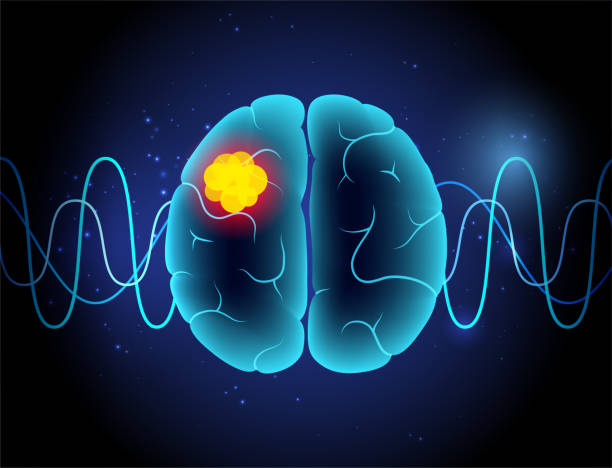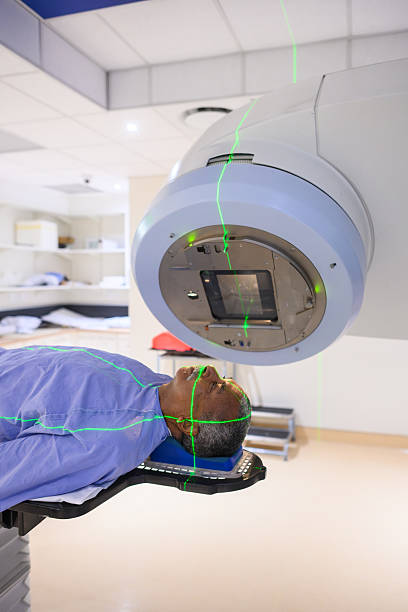By Morgan Nwanguma
A groundbreaking study from Keck Medicine of USC has revealed a promising triple-therapy approach that may significantly extend survival for patients with glioblastoma—an aggressive and often inoperable brain cancer.
The research highlights the potential of combining Tumor Treating Fields (TTFields)—a device that delivers low-intensity, alternating electric fields to the brain—with immunotherapy (pembrolizumab) and chemotherapy (temozolomide). This novel combination may be especially beneficial for patients with large, inoperable tumors.
TTFields work by disrupting tumor cell division. The electric fields push and pull on critical internal structures within cancer cells, interfering with their ability to multiply. Delivered through mesh electrodes placed strategically on the scalp, the fields are worn for about 18 hours per day and are precisely tuned to target the tumor’s location.
The study found that TTFields not only impede tumor growth but also stimulate the immune system. The treatment draws T cells—immune cells responsible for attacking cancer—into the tumor. When followed by immunotherapy, these T cells remain active longer and are joined by more robust, cancer-fighting reinforcements.
According to the National Brain Tumor Society, glioblastoma patients typically survive an average of just eight months after diagnosis. However, this triple combination therapy could mark a pivotal shift, offering new hope and potentially extending survival for those facing one of the most lethal forms of brain cancer.
“By using TTFields with immunotherapy, we prime the body to mount an attack on the cancer, which enables the immunotherapy to have a meaningful effect in ways that it could not before,” said David Tran, MD, PhD, chief of neuro-oncology with Keck Medicine, co-director of the USC Brain Tumor Center and corresponding author of the study. “Our findings suggest that TTFields may be the key to unlocking the value of immunotherapy in treating glioblastoma.”
Electric Fields May Unlock the Power of Immunotherapy for Glioblastoma
While Tumor Treating Fields (TTFields) are often combined with chemotherapy to treat cancer, outcomes for glioblastoma remain grim. Similarly, immunotherapy—which has transformed treatment for many other cancer types—has shown limited effectiveness against glioblastoma when used alone.
But this new study suggests that the combination of TTFields, chemotherapy, and immunotherapy may be a game changer. Adding pembrolizumab (a type of immunotherapy known as an immune checkpoint inhibitor) to TTFields and temozolomide (chemotherapy) led to a 70% increase in overall survival. Remarkably, patients with large, inoperable tumors responded even more strongly. Researchers believe this is because bigger tumors provide more targets for the therapy, helping to activate the immune system more effectively.
Using Electric Fields to Prime the Immune System
Pembrolizumab works by enhancing the activity of T cells, the immune system’s cancer-fighting soldiers. But glioblastomas are notoriously difficult to treat because they form within the brain—protected by the blood-brain barrier, a biological shield that restricts the entry of immune cells and many drugs. As a result, glioblastomas typically have few T cells in or around them, making immune-based therapies less effective.
Keck Medicine researchers, led by Tran, proposed a bold approach: stimulate the immune system from inside the tumor itself. This technique, known as in situ immunization, uses TTFields to directly trigger an immune response within the tumor environment.
The study showed that TTFields can spark the infiltration of immune cells into the tumor, essentially turning the tumor into its own vaccine. Once the immune system is engaged, checkpoint inhibitors like pembrolizumab can further amplify the response, helping the body recognize and destroy cancer cells more effectively.
This triple therapy could represent a significant step forward in treating glioblastoma—especially for patients with large, unresectable tumors, who currently have few options.
“Think of it like a team sport — immunotherapy sends players in to attack the tumor (the offense), while TTFields weaken the tumor’s ability to fight back (the defense). And just like in team sports, the best defense is a good offense,” said Tran, who is also a member of the USC Norris Comprehensive Cancer Center.
Study Design and Key Findings
The findings are based on data from 2-THE-TOP, a Phase 2 clinical trial involving 31 newly diagnosed glioblastoma patients who had already completed chemoradiation therapy. Of these, 26 patients received a combination of Tumor Treating Fields (TTFields), chemotherapy, and immunotherapy. Notably, seven of these patients had inoperable tumors due to their location—representing a particularly high-risk group with the fewest treatment options and poorest outcomes.
Participants received six to 12 monthly cycles of chemotherapy alongside continuous TTFields therapy for up to 24 months, with the treatment schedule adjusted based on individual response. Immunotherapy (pembrolizumab) was administered every three weeks, beginning with the second round of chemotherapy, and continued for up to two years.
The results were striking: patients who received the triple combination therapy lived an average of 10 months longer than historical patients who had received TTFields with chemotherapy alone. Even more compelling, patients with large, inoperable tumors experienced a 13-month increase in survival and showed significantly stronger immune activation compared to those whose tumors had been surgically removed.
These results suggest that combining TTFields with chemotherapy and immunotherapy not only extends survival but may be particularly effective in patients with previously untreatable tumors.
“Further studies are needed to determine the optimal role of surgery in this setting, but these findings may offer hope, particularly for glioblastoma patients who do not have surgery as an option,” said Tran.
Advancing to Phase 3: Confirming the Promise of Triple Therapy
Keck Medicine is now helping lead a multicenter Phase 3 clinical trial designed to confirm the effectiveness of combining TTFields, immunotherapy, and chemotherapy for glioblastoma treatment. The trial is a major step forward in validating the results of the earlier Phase 2 study.
Dr. Tran, a leading researcher who has studied TTFields for over a decade, is serving as chair of the trial’s steering committee. Dr. Frances Chow, a neuro-oncologist at USC Norris, is the principal investigator at the Keck Medicine site.
The Phase 3 trial is currently enrolling at 28 sites across the United States, Europe, and Israel, with plans to recruit more than 740 patients through April 2029. Participants will include individuals who have undergone gross total resection, partial resection, or biopsy-only, allowing researchers to assess how the extent of surgical tumor removal may influence the immune response and overall effectiveness of the triple therapy approach.
This trial marks a critical next step toward transforming care for glioblastoma patients worldwide.
Keck School of Medicine of USC authors of this study include Dongjiang Chen, PhD, assistant professor of research neurological surgery; Son Le, PhD, assistant professor of research neurological surgery; Harshit Manektalia, research programmer; Ming Li, PhD, professor of research population and public health sciences; and Adam O’Dell, research lab specialist. Ashley Ghiaseddin, MD, and Maryam Rahman, MD, MS, colleagues from the University of Florida, also contributed to this work.
This research was financially backed by funding from Novocure, manufacturers of Optune, the TTFields device used in this research. Tran has received honoraria from Novocure for consultant work. Chen and Tran are inventors of two patent applications having to do with work reported in this study.




